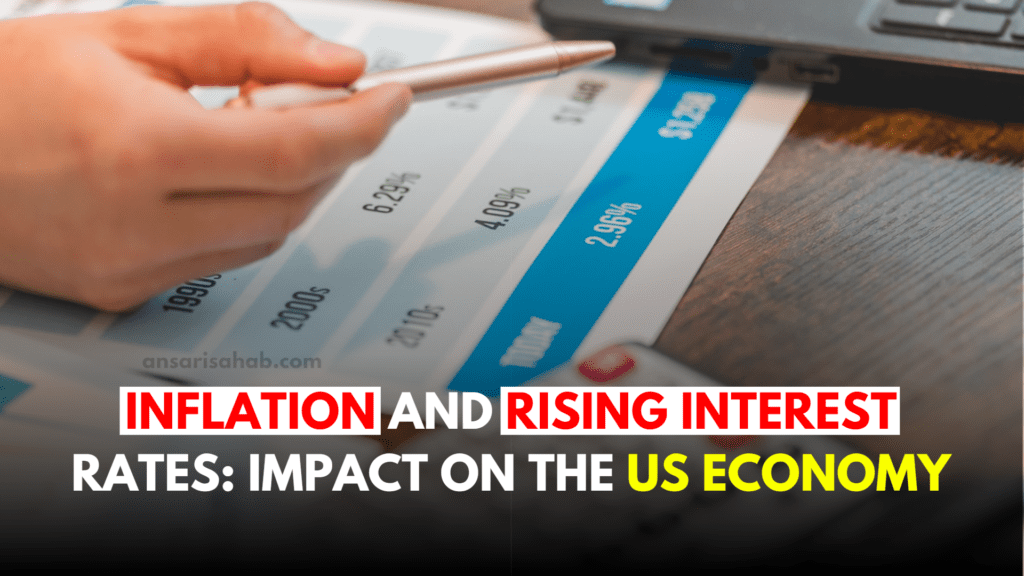Dividend investing is a strategy that involves buying stocks in companies that pay regular dividends. Dividends are payments that companies make to their shareholders out of their profits. Dividend investing can be a great way to generate passive income and to build wealth over time.
Benefits of dividend investing
There are several benefits to dividend investing, including:
- Income: Dividend investing can provide a steady stream of income for investors. This income can be used to supplement retirement income, cover living expenses, or reinvest to grow your portfolio.
- Growth potential: Dividend stocks have historically outperformed the overall stock market over the long term. This is because dividend stocks tend to be more mature and stable companies, and they are often less risky than growth stocks.
- Diversification: Dividend investing can help to diversify your portfolio. Dividend stocks are typically less correlated with other asset classes, such as bonds and commodities. This means that dividend stocks can help to reduce the overall risk of your portfolio.
Risks of dividend investing
Dividend investing is not without risk. Some of the risks of dividend investing include:
- Dividend cuts: Companies can cut or eliminate their dividends at any time. This can reduce your income and impact the value of your portfolio.
- Market risk: Dividend stocks are still subject to market risk. This means that the value of your dividend stocks can decline if the stock market declines.
- Interest rate risk: Rising interest rates can make dividend stocks less attractive to investors. This is because investors can get a higher return on their money by investing in bonds or other fixed-income investments.
Dividend investing strategies
There are many different dividend investing strategies that you can use. Some of the most popular dividend investing strategies include:
- Dividend growth investing: Dividend growth investing involves investing in companies that have a history of increasing their dividends over time. This can be a good strategy for investors who are looking for a growing stream of income.
- Dividend income investing: Dividend income investing involves investing in companies that pay high dividends. This can be a good strategy for investors who are looking for a steady stream of income.
- Value dividend investing: Value dividend investing involves investing in companies that pay dividends and that are also trading at a discount to their intrinsic value. This can be a good strategy for investors who are looking for a combination of income and capital appreciation.
- High-yield dividend investing: High-yield dividend investing involves investing in stocks that pay a high dividend yield. High-yield dividend investors typically focus on stocks with a dividend yield of 4% or higher.
Read Also: US Stock Market Hits New All-Time Highs: What’s Driving the Rally?
How to develop a dividend investing strategy
The best dividend investing strategy for you will depend on your individual investment goals and risk tolerance. If you are new to dividend investing, it is a good idea to start by developing a dividend investing strategy. This will help you to stay on track and to avoid making impulsive decisions.
Here are some tips for developing a dividend investing strategy:
- Define your investment goals: What are you hoping to achieve with your dividend investing strategy? Are you looking to generate income, grow your wealth, or both? Once you know your investment goals, you can start to develop a strategy to achieve them.
- Assess your risk tolerance: How much risk are you willing to take with your investments? Dividend investing is generally less risky than other types of investing, but it is still important to understand the risks involved.
- Choose a dividend investing strategy: Once you know your investment goals and risk tolerance, you can choose a dividend investing strategy that is right for you. There are a number of different dividend investing strategies to choose from, so it is important to do your research and to choose a strategy that is appropriate for your needs.
- Rebalance your portfolio regularly: It is important to rebalance your portfolio regularly to ensure that it remains aligned with your investment goals and risk tolerance. This may involve buying more dividend stocks if the stock market has declined or selling dividend stocks if the stock market has risen.
How to choose dividend stocks
When choosing dividend stocks, it is important to consider a number of factors, including:
- Dividend yield: The dividend yield is the percentage of the stock price that is paid out in dividends each year. A high dividend yield can be attractive, but it is important to remember that dividend yield is not the only factor to consider.
- Dividend payout ratio: The dividend payout ratio is the percentage of the company’s earnings that are paid out in dividends. A high dividend payout ratio can be a sign that the company is not reinvesting enough earnings in its business.
- Dividend growth history: It is important to look for companies that have a history of increasing their dividends over time. This is a sign that the company is financially healthy and that it is committed to returning capital to its shareholders.
- Company fundamentals: It is also important to look at the company’s overall financial health. This includes factors such as profitability, debt levels, and cash flow.
Read Also: Stock market outlook for tech stocks in 2023
Building a dividend portfolio
Once you have chosen a few dividend stocks that you are interested in, you can start to build a dividend portfolio. When building a dividend portfolio, it is important to diversify your holdings. This means investing in companies across different sectors and industries.
It is also important to reinvest your dividends. This means using your dividend payments to buy more shares of the companies that you are invested in. This can help to compound your returns over time.
Dividend investing for every investor
Dividend investing can be a great strategy for investors of all ages and risk tolerances. The Dividend investing can be a good way to generate passive income, to build wealth over time, and to reduce risk.
Here are some tips for dividend investing for different types of investors:
- New investors: New investors should start by investing in a diversified index fund that tracks the stock market. This is a good way to get exposure to a variety of dividend-paying stocks without having to pick individual stocks.
- Retirement investors: Retirement investors should focus on investing in companies with a history of paying reliable dividends. This can help to provide a steady stream of income during retirement.
- Income investors: Income investors should focus on investing in companies with high dividend yields. This can help to generate a steady stream of income.
- Growth investors: Growth investors can also invest in dividend stocks, but they should focus on companies that are expected to grow their dividends over time. This can provide a combination of income and capital appreciation.
Additional dividend investing strategies
Here are some additional dividend investing strategies that you may want to consider:
- Covered call writing: Covered call writing is a strategy that involves selling call options on stocks that you own. This can be a good way to generate additional income from your dividend-paying stocks.
- Put selling: Put selling is a strategy that involves selling put options on stocks that you are interested in buying. This can be a good way to buy stocks at a discount.
- Dividend ETFs: Dividend ETFs are exchange-traded funds that track indices of dividend-paying stocks. This can be a good way to invest in a basket of dividend-paying stocks without having to pick individual stocks.
Dividend investing for different investor types
Dividend investing can be a good strategy for investors of all ages and risk tolerances. Here are some specific dividend investing strategies for different investor types:
- Young investors: Young investors may want to focus on dividend growth investing. This is because they have a long time horizon and can reinvest their dividends to grow their wealth over time.
- Retirees: Retirees may want to focus on dividend income investing. This is because they need to generate income from their investments to live on.
- Risk-averse investors: Risk-averse investors may want to focus on value dividend investing. This is because they are buying stocks at a discount and generating income from their investments.
Conclusion
Dividend investing can be a great way to generate passive income, to build wealth over time, and to reduce risk. There are many different dividend investing strategies that you can use, and there is a dividend investing strategy for every investor.
Additional tips for dividend investing
- Do your research: Before investing in any stock, it is important to do your research and understand the company’s business model, financial health, and dividend history.
- Diversify your portfolio: It is important to diversify your portfolio by investing in a variety of different dividend-paying stocks. This will help to reduce your risk.
- Be patient: Dividend investing is a long-term strategy. Don’t expect to get rich quick.
- Reinvest your dividends: Reinvesting your dividends is one of the best ways to compound your returns over time.
- Don’t panic sell: The stock market is volatile, but dividend stocks tend to be less volatile than non-dividend stocks. Don’t panic sell your dividend stocks during market downturns.
FAQ (Frequently Asked Questions)
Dividend investing is a strategy where you buy stocks in companies that pay regular dividends to shareholders, providing a source of passive income and long-term wealth-building.
Benefits of dividend investing include generating a steady income stream, potential for long-term growth, and portfolio diversification.
Risks of dividend investing include the potential for companies to cut or eliminate dividends, market risk, and interest rate risk.
Popular dividend investing strategies include dividend growth investing, dividend income investing, value dividend investing, and high-yield dividend investing.
Start by defining your investment goals, assessing your risk tolerance, and choosing a dividend investing strategy that aligns with your needs. Regularly rebalancing your portfolio is also crucial.
Factors to consider when choosing dividend stocks include dividend yield, payout ratio, dividend growth history, and the company’s overall financial health.
To build a diversified dividend portfolio, invest in dividend stocks from various sectors and industries and reinvest your dividends to compound your returns.
Yes, dividend investing can benefit investors of all ages and risk tolerances. Strategies can be tailored to individual goals, whether for income, growth, or both.
Additional strategies include covered call writing, put selling, and investing in dividend ETFs to enhance income and reduce risk.
Tips include conducting thorough research, diversifying your portfolio, practicing patience, reinvesting dividends, and avoiding panic selling during market downturns.









